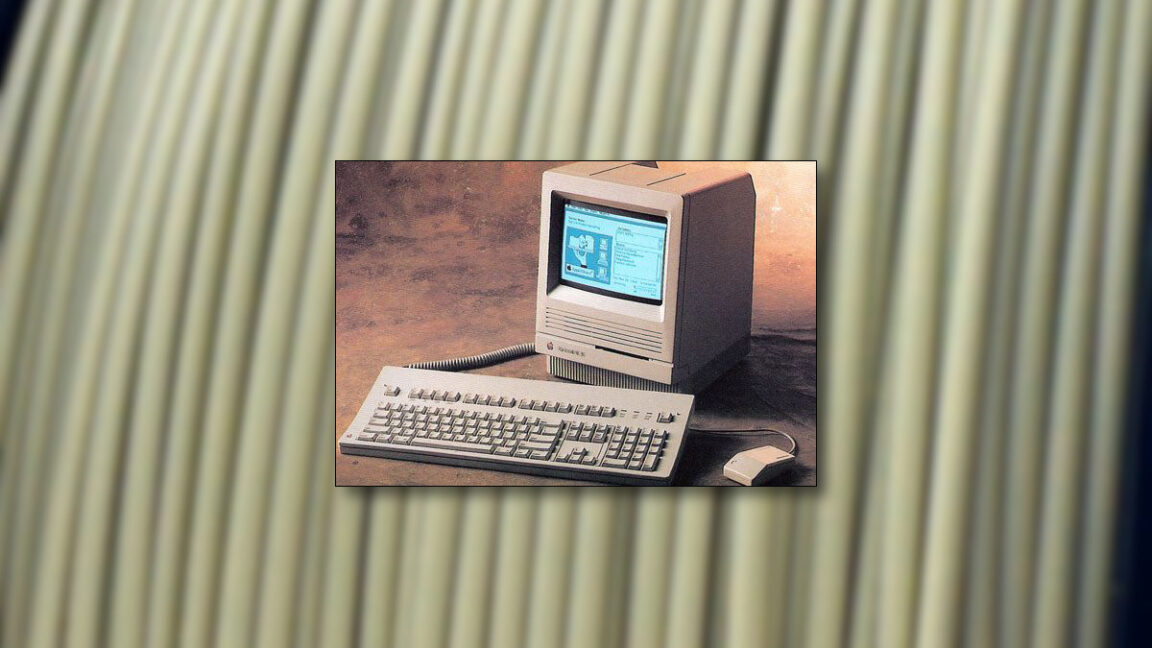Love, Death & Robots Is A Love Letter To Sci-Fi, Animation, and Adaptation
Netflix has no shortage of options when it comes to science fiction programming and experimental anthology series, but Love, Death + Robots is an especially beautiful love letter to science fiction’s chameleonic nature and endless versatility. The unpredictable animated anthology series combines sci-fi with comedy, horror, fantasy, mystery, and romance as it brings gripping genre literature to life through a modern lens. In doing so, Love, Death + Robots doesn’t just celebrate science fiction; it helps it evolve.
Sci-fi is a revelatory storytelling genre that can open the audience’s mind and forever change their perception of reality. The best of it probes, inspires, and admonishes, which is exactly what Tim Millerand Jennifer Yuh Nelsonstrive for in Love, Death + Robots, now in its fourth season. Nothing is off-limits in the series, whether it’s a cat-fueled dystopia, gladiatorial combat atop dinosaurs, or a poet’s feud with Satan. The show aims to create the same level of jubilation in its viewers as those who discovered these short stories for the first time.
Pretty much all the vignettes have been based on short stories that Tim’s read throughout his life,” explains Nelson, Love, Death + Robots’ supervising director. “We have hundreds of these stories just piled up.”
There’s a true passion for the source material that helps Love, Death + Robots excel. This enormous collection of genre classics gets carefully selected as each new season takes shape.
“We try to curate the perfect mix. So we have a little something for everybody,” creator Miller elaborates. This has been one of the secrets to Love, Death + Robots’ success. Each collection of episodes is truly unique and feels like a pulpy paperback of short stories. In fact, Love, Death + Robots has even published collections of each season’s stories. “All the money goes to the authors,” Miller proudly adds. “We want people to read the stories! Forget about making them into movies.”
Love, Death + Robots has resonated with science fiction fans who appreciate captivating and concise storytelling. That being said, Love, Death + Robots is also a visual extravaganza that pushes just as many boundaries in animation. Four seasons in, the series
“Often, we choose the director and the animation studio according to their specialty,” Nelson explains as she continues to break down the meticulous nature of this process. “If we have two tentpole episodes that look a certain way, then we want to make sure that those episodes are going to look vastly different from each other.” For instance, Titmouse’s impressionistic work on Volume IV’s “How Zeke Got Religion” actively enhances the story. “You need to find their thing,” Nelson adds in reference to Love, Death + Robots’ roster of animation studios and what they each bring to the table.
“It’s important for us, especially for this series, to make sure that we’re really showcasing the whole breadth of animation,” asserts Nelson. “Sometimes these directors are very much pioneers in what they do, and no one else is doing what they do. That’s why we end up working with them.” Photo-realistic 3D animation, stop-motion, traditional 2D visuals, and stop-motion are just some of the animation styles on display in Love, Death + Robots. The series has even increasingly dipped its toe into live-action stories that blur the lines between reality and animation. “Rarely do you see such a showcase of animation like this,” Nelson says. “This is a way to show new ideas, new looks, and new innovation by different directors and studios around the world.”
Miller reiterates that it’s a deeply collaborative process where the animation studios have just as much agency as the storytellers.
“We push it in the initial direction, and then the directors come in and do their pitch.” The final product becomes a synthesis of ideas that are built upon ambition and taking risks. “We try to give them as much freedom as we can,” Miller emphasizes. This relationship has paid off well, earning the animated series 13 Primetime Emmy Awards, including Outstanding Short Form Animated Program and Outstanding Individual Achievement in Animation. The series’ latest batch of episodes is likely to add to this already impressive collection of accolades.
Love, Death + Robots’ 45 episodes provide a broad, brave mix of everything that science fiction and animation have to offer. However, the series continues to look forward and is determined to surpass these heights. “We’ve got a lot of stories,” boasts Miller. “I have the next season—seasons, actually—picked out.” And while there were previously spin-offs and off-shoots in consideration, Love, Death + Robots is the perfect incubator for these stories, whether they’re two minutes or 20 minutes. “The beauty of the show is that we’d never get some of these ideas made if we were asking to do a feature,” admits Miller.
Join our mailing list
Get the best of Den of Geek delivered right to your inbox!
Love, Death + Robots plays by its own rules and continues to redefine anthology storytelling. It’s still the only series where fans can alternate between a string puppet rock concert and Russian Civil War soldiers fighting ancient supernatural evils.
“There’s still a lot of room to do new and innovative things that we haven’t done before,” Miller insists. “Although we always seem to end up with too many cat stories. I can’t really explain that.”
Four volumes of Love, Death & Robots are available to stream on Netflix now.
#love #death #ampamp #robots #letterLove, Death & Robots Is A Love Letter To Sci-Fi, Animation, and Adaptation
Netflix has no shortage of options when it comes to science fiction programming and experimental anthology series, but Love, Death + Robots is an especially beautiful love letter to science fiction’s chameleonic nature and endless versatility. The unpredictable animated anthology series combines sci-fi with comedy, horror, fantasy, mystery, and romance as it brings gripping genre literature to life through a modern lens. In doing so, Love, Death + Robots doesn’t just celebrate science fiction; it helps it evolve.
Sci-fi is a revelatory storytelling genre that can open the audience’s mind and forever change their perception of reality. The best of it probes, inspires, and admonishes, which is exactly what Tim Millerand Jennifer Yuh Nelsonstrive for in Love, Death + Robots, now in its fourth season. Nothing is off-limits in the series, whether it’s a cat-fueled dystopia, gladiatorial combat atop dinosaurs, or a poet’s feud with Satan. The show aims to create the same level of jubilation in its viewers as those who discovered these short stories for the first time.
Pretty much all the vignettes have been based on short stories that Tim’s read throughout his life,” explains Nelson, Love, Death + Robots’ supervising director. “We have hundreds of these stories just piled up.”
There’s a true passion for the source material that helps Love, Death + Robots excel. This enormous collection of genre classics gets carefully selected as each new season takes shape.
“We try to curate the perfect mix. So we have a little something for everybody,” creator Miller elaborates. This has been one of the secrets to Love, Death + Robots’ success. Each collection of episodes is truly unique and feels like a pulpy paperback of short stories. In fact, Love, Death + Robots has even published collections of each season’s stories. “All the money goes to the authors,” Miller proudly adds. “We want people to read the stories! Forget about making them into movies.”
Love, Death + Robots has resonated with science fiction fans who appreciate captivating and concise storytelling. That being said, Love, Death + Robots is also a visual extravaganza that pushes just as many boundaries in animation. Four seasons in, the series
“Often, we choose the director and the animation studio according to their specialty,” Nelson explains as she continues to break down the meticulous nature of this process. “If we have two tentpole episodes that look a certain way, then we want to make sure that those episodes are going to look vastly different from each other.” For instance, Titmouse’s impressionistic work on Volume IV’s “How Zeke Got Religion” actively enhances the story. “You need to find their thing,” Nelson adds in reference to Love, Death + Robots’ roster of animation studios and what they each bring to the table.
“It’s important for us, especially for this series, to make sure that we’re really showcasing the whole breadth of animation,” asserts Nelson. “Sometimes these directors are very much pioneers in what they do, and no one else is doing what they do. That’s why we end up working with them.” Photo-realistic 3D animation, stop-motion, traditional 2D visuals, and stop-motion are just some of the animation styles on display in Love, Death + Robots. The series has even increasingly dipped its toe into live-action stories that blur the lines between reality and animation. “Rarely do you see such a showcase of animation like this,” Nelson says. “This is a way to show new ideas, new looks, and new innovation by different directors and studios around the world.”
Miller reiterates that it’s a deeply collaborative process where the animation studios have just as much agency as the storytellers.
“We push it in the initial direction, and then the directors come in and do their pitch.” The final product becomes a synthesis of ideas that are built upon ambition and taking risks. “We try to give them as much freedom as we can,” Miller emphasizes. This relationship has paid off well, earning the animated series 13 Primetime Emmy Awards, including Outstanding Short Form Animated Program and Outstanding Individual Achievement in Animation. The series’ latest batch of episodes is likely to add to this already impressive collection of accolades.
Love, Death + Robots’ 45 episodes provide a broad, brave mix of everything that science fiction and animation have to offer. However, the series continues to look forward and is determined to surpass these heights. “We’ve got a lot of stories,” boasts Miller. “I have the next season—seasons, actually—picked out.” And while there were previously spin-offs and off-shoots in consideration, Love, Death + Robots is the perfect incubator for these stories, whether they’re two minutes or 20 minutes. “The beauty of the show is that we’d never get some of these ideas made if we were asking to do a feature,” admits Miller.
Join our mailing list
Get the best of Den of Geek delivered right to your inbox!
Love, Death + Robots plays by its own rules and continues to redefine anthology storytelling. It’s still the only series where fans can alternate between a string puppet rock concert and Russian Civil War soldiers fighting ancient supernatural evils.
“There’s still a lot of room to do new and innovative things that we haven’t done before,” Miller insists. “Although we always seem to end up with too many cat stories. I can’t really explain that.”
Four volumes of Love, Death & Robots are available to stream on Netflix now.
#love #death #ampamp #robots #letter
















